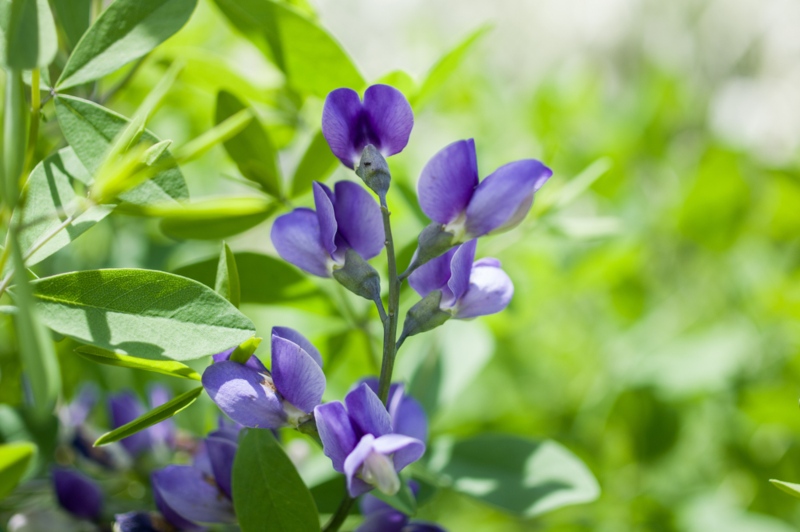Baptisia, also called false indigo, is a lovely flower that grows into a small shrub. It can get as tall as 5 feet and has wide as 3 to 4 feet. It has a long blooming season when flower spikes full of blue blossoms flower.
After the flowers, the plant grows large, unusual seed pods up to 3 inches long that many growers enjoy for ornamental reasons as well as in flower arrangements. The leaves grow in groups of three and are blue-green.
Light and Temperature Requirements
Baptisia can be grown in zones 3 through 10, encompassing much of the continental United States. They enjoy full sun best, but they will tolerate partial shade as long as they get full sun during part of the day. When these plants have partial shade, the stems tend to be weaker, and this often makes it necessary to use stakes to keep the stems upright. To keep the stems upright on their own requires at least six hours of sun per day.
Watering
Young baptisia plants will need plenty of watering while they are becoming established. Once they are, they are fairly drought-tolerant. They grow best when the soil is kept evenly moist, so they will likely need watering if the weather becomes unusually dry. To help keep the soil evening moist, use mulch on top to trap moisture and keep it there longer.

Soil
The baptisia isn’t finicky about its soil and will thrive in most soil types as long as they have good drainage. They do prefer soil that is anywhere from neutral to a little acidic, so don’t add lime to the soil when it’s time to fertilize. Make sure that the soil drains well. If the soil is thicker, such as clay, consider adding sand to the mix to allow for better drainage.
Fertilizer
In the early spring, you can add a slow-release, balanced fertilizer to make the soil richer. If the plant goes through a particularly rainy season, you can add nitrogen to combat the leeching that often happens in heavy rains. However, these plants should thrive well without fertilizer as long as they get plenty of sun.
Propagation
Planting from seed requires a lot of patience, as they establish themselves slowly and won’t flower until the third year. The roots run deep, as deep as 12 feet, so it’s important to choose a good place for them and not to move them. Transplanting a young plant often takes two years to get it established well enough to bloom. However, the plants live a very long time, so they are well worth the extra time to get them started. A well-cared-for baptisia can spout up to 100 flower spikes in the spring.
Basic Care
Baptisia plants are easy to care for once they have become established. They don’t attract pests, and they don’t tend to catch any disease. The full sun that the plant enjoys keeps it free from fungal infections. They will bloom in the late spring and early summer for about six weeks. If you want to prevent the seed pods from growing, cut away the dead flowers to prevent them.



